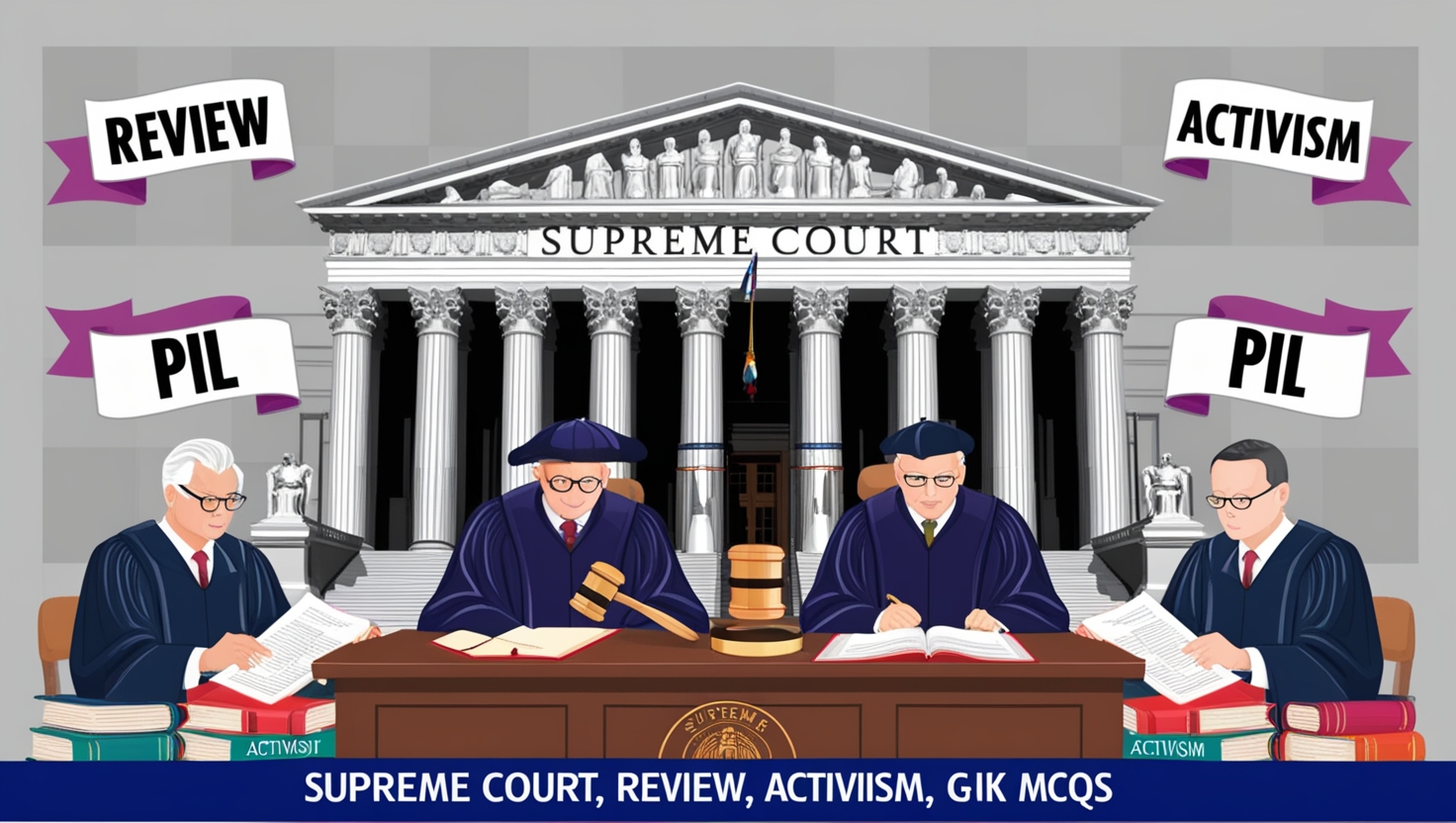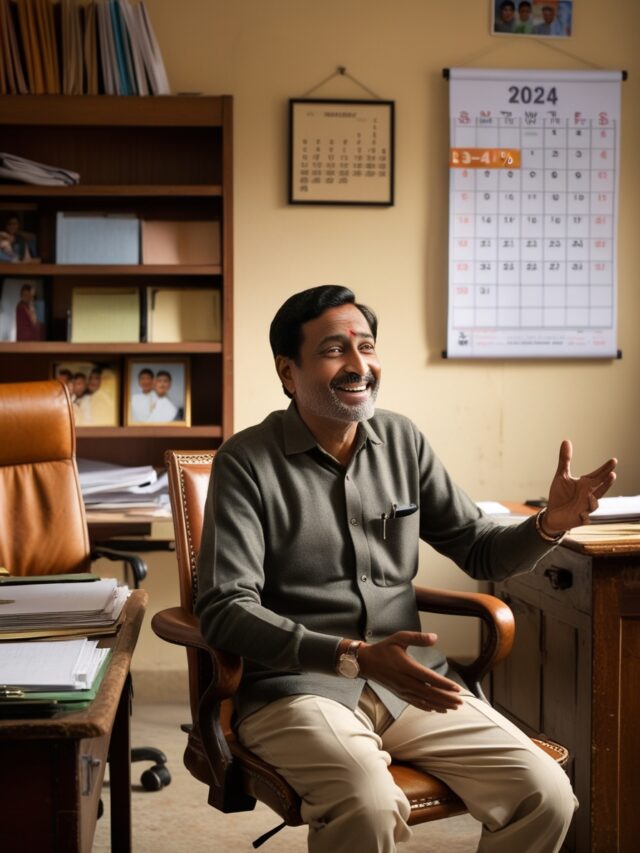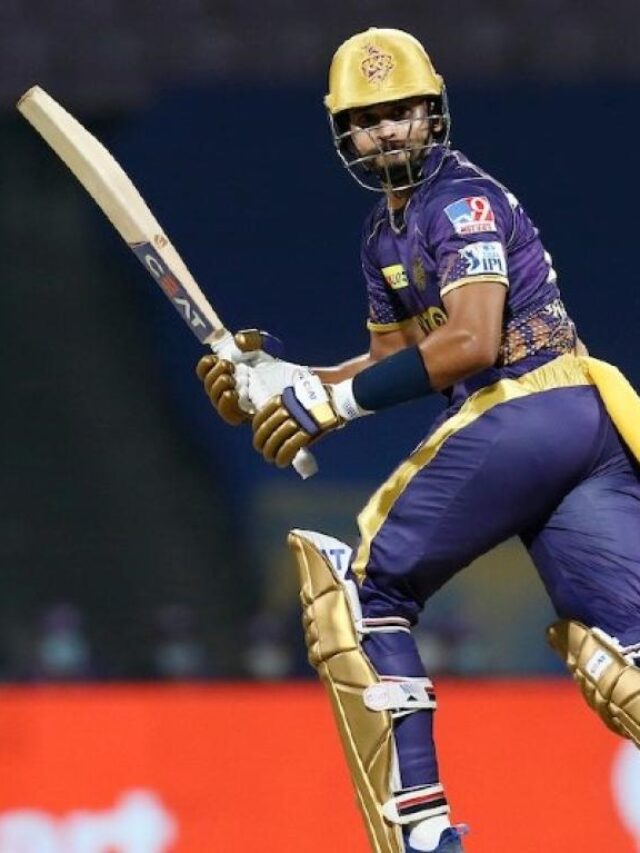
1. From which Act is the single system of courts adopted in the Constitution of India?
- Government of India Act
- 1858 Government of India Act
- 1935 Government of India Act
- 1919 Indian Councils Act, 1909
Show Answer
Answer: 1858 Government of India Act
The single system of courts in the Constitution of India was adopted from the Government of India Act of 1935. This system enforces both Central laws as well as state laws, creating an integrated judicial system. It places the Supreme Court at the apex of the hierarchy, with high courts below it. This integrated structure facilitates the interpretation and enforcement of laws at the national and state levels.
2. When was the Supreme Court of India inaugurated?
- 1935
- 1949
- 1950
- 1952
Show Answer
Answer: 1950
The Supreme Court of India was inaugurated on January 28, 1950, marking the commencement of the Indian Constitution. It succeeded the Federal Court of India, which was established under the Government of India Act of 1935. The jurisdiction and authority of the Supreme Court are more extensive than those of its predecessor, given the unique role it plays in interpreting the Indian Constitution and addressing complex legal matters.
3. Which articles of the Constitution deal with the organisation, independence, jurisdiction, powers, procedures, and so on of the Supreme Court of India?
- Articles 111 to 123
- Articles 124 to 147
- Articles 167 to 185
- Articles 224 to 267
Show Answer
Answer: Articles 124 to 147
Articles 124 to 147 in Part V of the Constitution of India provide detailed provisions related to the organization, independence, jurisdiction, powers, procedures, and other aspects of the Supreme Court. Parliament is empowered to regulate these provisions, making necessary amendments when needed.
4. What is the current strength of judges in the Supreme Court?
- 29
- 31
- 34
- 35
Show Answer
Answer: 34
The Supreme Court consists of thirty-four judges. This includes one Chief Justice and thirty-three other judges. The strength of the Supreme Court has evolved over time. It originally had eight judges, including one Chief Justice. The Parliament has increased the number progressively to meet the growing caseload and legal complexity. The expansion reflects the evolving legal landscape in India.
5. What was the original strength of the Supreme Court of India?
- 8
- 12
- 15
- 20
Show Answer
Answer: 8
The original strength of the Supreme Court of India was fixed at eight, including one Chief Justice and seven other judges. The Parliament increased this number progressively to ten in 1956, to thirteen in 1960, to seventeen in 1977, to twenty-five in 1986, to thirty in 2008, and to thirty-three in 2019.
6. Who appoints the judges of the Supreme Court?
- Chief Justice of India
- President
- Prime Minister
- Council of Ministers
Show Answer
Answer: President
The President of India appoints judges to the Supreme Court. The appointment of the Chief Justice of India involves consultation with senior judges of the Supreme Court and high courts, making it a consultative process aimed at ensuring the selection of the most capable and deserving individuals.
7. In which year did the Supreme Court declare the National Judicial Appointments Commission (NJAC) Act unconstitutional and void?
- 2010
- 2013
- 2015
- 2018
Show Answer
Answer: 2015
In 2015, the Supreme Court declared both the 99th Constitutional Amendment and the National Judicial Appointments Commission (NJAC) Act as unconstitutional and void. This decision upheld the independence of the judiciary and affirmed the role of the judiciary in judicial appointments.
8. Who administers the oath to a person appointed as a judge of the Supreme Court?
- Prime Minister
- President
- Chief Justice of India
- Vice President
Show Answer
Answer: President
Before a person takes office as a judge of the Supreme Court, they are required to make and subscribe an oath or affirmation before the President or another person authorized by the President for this purpose. This formal oath underscores their commitment to upholding the Constitution and delivering justice fairly.
9. What are the qualifications needed to be appointed as a judge of the Supreme Court?
- The person should have been a judge of a High Court for five years.
- The person should have been an advocate of a High Court.
- The person should be a distinguished jurist in the opinion of the President.
- All of the above
Show Answer
Answer: All of the above
To be appointed as a judge of the Supreme Court, a person should have specific qualifications. They should be a citizen of India and have either served as a judge of a high court for five years or as an advocate in a high court for ten years or be recognized as a distinguished jurist in the opinion of the President. These qualifications ensure that appointees have a deep understanding of the legal system.
10. Who decides the salaries, allowances, privileges, leave, and pension of the judges of the Supreme Court?
- President
- Prime Minister
- Parliament
- Council of Ministers
Show Answer
Answer: Parliament
The salaries, allowances, privileges, leave, and pensions of judges of the Supreme Court are determined by the Parliament and can change over time. However, these cannot be altered to the disadvantage of the judges after their appointment unless during a financial emergency when extraordinary measures are taken.
Q11: What is the maximum age until which a Supreme Court judge can hold office?
1. 60 years
2. 62 years
3. 65 years
4. 70 years
Show Answer
Answer: 3
Explanation: A judge of the Supreme Court serves until they attain the age of 65 years, with any questions or confusions about their age resolved as provided by the Parliament. Their fixed term ensures the stability and continuity of the judiciary.
Q12: To whom does a judge of the Supreme Court submit his resignation?
1. Prime Minister
2. Supreme Court of India
3. Parliament
4. President
Show Answer
Answer: 4
Explanation: A judge of the Supreme Court can resign from their office by writing to the President of India. They can also be removed from their office by the President of India on the recommendation of Parliament, emphasizing the principle of judicial independence and accountability.
Q13: Who is authorised to increase the number of judges in the Supreme Court of India?
1. Chief Justice of India
2. Parliament
3. President
4. The Law Commission
Show Answer
Answer: 2
Explanation: The power to increase the number of judges in the Supreme Court of India indeed rests with the Parliament, as provided in Article 124 of the Constitution. This article outlines the establishment and composition of the Supreme Court. The Parliament can determine the number of judges to address the court’s caseload and complexities in the legal landscape.
Q14: What is correct with respect to the removal of a judge of the Supreme Court?
1. He can be removed by the President on the recommendation of the Parliament.
2. He can be removed by the President.
3. He can be removed by the Chief Justice of India.
4. He can be removed by the President on the recommendation of the Chief Justice of India.
Show Answer
Answer: 1
Explanation: Article 124(4) of the Constitution of India safeguards the independence of judges in the Supreme Court. It states that a judge of the Supreme Court can only be removed from office through a rigorous process, including an address in each House of Parliament. This address must be supported by a majority of the total membership of the House and by a majority of not less than two-thirds of the members present and voting. This stringent provision is intended to ensure the security of the judiciary from undue political influence.
Q15: In which of the following institutions are the judges of the Supreme Court allowed to work after retirement?
1. In Supreme Court only
2. In High Courts only
3. In both Supreme Court and High Courts
4. None of the above
Show Answer
Answer: 3
Explanation: Article 124(7) underscores the importance of judicial independence. It prohibits any person who has held office as a judge of the Supreme Court of India from pleading or acting in any court or before any authority within the territory of India after their tenure as a judge has ended. This provision aims to maintain the impartiality and dignity of former judges.
Q16: In which of the following situations are Ad Hoc judges appointed in the Supreme Court?
1. When no one is available for permanent appointment
2. When there is no quorum of judges available to hold a session
3. When there is an abnormal increase in cases pending before the court
4. When some judges go on leave
Show Answer
Answer: 2
Explanation: Article 127(1) outlines a mechanism for addressing any shortage of judges in the Supreme Court. If there’s not a quorum of judges available to hold or continue any session of the court, the Chief Justice of India can request the attendance of an ad hoc judge for such a period as necessary. This provision helps ensure the court’s functioning remains uninterrupted.
Q17: In which year did the Supreme Court adopt the Collegium System for the appointment of Judges of the Supreme Court of India?
1. 1993
2. 1997
3. 2001
4. 2005
Show Answer
Answer: 1
Explanation: The Collegium System for the appointment of judges in the Supreme Court was indeed adopted in 1993. This system, rooted in three Supreme Court judgments collectively known as the Three Judges Case, grants substantial influence to the judiciary in the appointment of judges. It has been instrumental in safeguarding judicial independence and enhancing the quality and transparency of judicial appointments.
Q18: What is the minimum number of Judges of the Supreme Court required for hearing any case involving the interpretation of the Constitution?
1. 10
2. 8
3. 7
4. 5
Show Answer
Answer: 4
Explanation: For hearing cases involving the interpretation of the Constitution of India, a minimum of five judges is required, forming a Constitutional Bench. This practice ensures that important constitutional matters receive the attention and deliberation they deserve.
Q19: Against which judge of the Supreme Court was the first case of impeachment initiated?
1. V. Ramaswami
2. Arun Mishra
3. Uday Umesh Lalit
4. Sanjay Kishan Kaul
Show Answer
Answer: 1
Explanation: The first case of impeachment in India involved Justice V. Ramaswami of the Supreme Court during 1991-1993. An Enquiry Committee found him guilty of misbehavior. However, the impeachment motion failed in the Lok Sabha as the Congress Party abstained from voting, highlighting the complexities of the impeachment process.
Q20: Where has the Constitution declared the seat of the Supreme Court of India?
1. Mumbai
2. Hyderabad
3. Delhi
4. Chennai
Show Answer
Answer: 3
Explanation: The Constitution of India declares Delhi as the seat of the Supreme Court of India. The Constitution also authorises the Chief Justice of India to appoint other place or places as the seat of the Supreme Court.
Q21: Who is the guarantor of the fundamental rights of the citizens and guardian of the Constitution of India?
1. President
2. Prime Minister
3. Parliament
4. Supreme Court
Show Answer
Answer: 4
Explanation: The Supreme Court of India plays a pivotal role in the Indian democratic political system. It serves as the nation’s highest court of appeal, guarantees the fundamental rights of citizens, and acts as a guardian of the Constitution. Its pivotal role ensures the rule of law and justice in the country.
Q22: Who can punish any person for the contempt of the Supreme Court?
1. President
2. Parliament
3. Council of ministers
4. Supreme Court
Show Answer
Answer: 4
Explanation: The Supreme Court has the power to punish contempt, ensuring the dignity and authority of the court are upheld. This authority prevents actions and decisions of the court from being criticized or opposed in a manner that undermines its effectiveness.
Q23: Who has the power to appoint the officers and servants of the Supreme Court?
1. Chief Justice of India
2. Parliament
3. Prime Minister
4. President
Show Answer
Answer: 1
Explanation: The Chief Justice of India has the power to appoint officers and servants of the Supreme Court without external interference and can prescribe their conditions of service, further protecting the judiciary’s autonomy.
Q24: Who remarked The Supreme Court of India has more powers than any other Supreme Court in any part of the world?
1. B.R. Ambedkar
2. K.M. Munshi
3. Alladi Krishnaswamy Ayyar
4. Jawaharlal Nehru
Show Answer
Answer: 3
Explanation: Alladi Krishnaswamy Ayyar’s assertion that the Supreme Court of India possesses more powers than any other Supreme Court in the world reflects the significant role the court plays in interpreting and upholding the Constitution.
Q25: Which state government challenged the Constitutional validity of the Coal Bearing Areas (Acquisition and Development) Act, 1957?
1. Maharashtra
2. Chhattisgarh
3. West Bengal
4. Jharkhand
Show Answer
Answer: 3
Explanation: The Coal Bearing Areas (Acquisition and Development) Act, 1957, passed by the Parliament, was challenged in court by the Government of West Bengal. However, the Supreme Court of India upheld the validity of the Act, illustrating the court’s role in interpreting and ensuring the constitutional validity of legislation.
Q26: Under which of the following, the power of the Supreme Court of India to decide disputes between the Centre and the State falls?
1. Constitutional jurisdiction
2. Advisory jurisdiction
3. Appellate jurisdiction
4. Original jurisdiction
Show Answer
Answer: 4
Explanation: Article 131 of the Indian Constitution deals with the original jurisdiction of the Supreme Court of India. It grants the Supreme Court authority to adjudicate in disputes between the Centre and one or more states, or between the Centre and any state(s) on one side and one or more other states on the other side, as well as disputes between two or more states. This provision ensures that the Supreme Court can address significant constitutional and intergovernmental matters.
Q27: Which of the following cases involved the largest bench till date constituted by the Supreme Court?
1. Keshvananda Bharti Case
2. Golaknath Case
3. Minerva Mills Case
4. Bank Nationalisation Case
Show Answer
Answer: 1
Explanation: The largest bench of 13 judges constituted by the Supreme Court till date was in the case of Keshvananda Bharti Case in the year 1973. The second largest bench was constituted in Golaknath Case in 1976.
Q28: Which Article of the Constitution of India deals with the Appellate Jurisdiction of the Supreme Court?
1. Article 130
2. Article 131
3. Article 133
4. Article 134
Show Answer
Answer: 3
Explanation: Article 133 of the Constitution of India deals with the Appellate Jurisdiction of the Supreme Court concerning civil matters. It is one of the four categories of appellate jurisdiction held by the Supreme Court. The other categories include appeals in constitutional matters, appeals in criminal matters, and appeals by special leave.
Q1Q29: The cases involving the interpretation of the Constitution by the Supreme Court come under which of the following?
1. Advisory Jurisdiction
2. Original Jurisdiction
3. Appellate Jurisdiction
Q29: The cases involving the interpretation of the Constitution by the Supreme Court come under which of the following?
1. Advisory Jurisdiction
2. Original Jurisdiction
3. Appellate Jurisdiction
4. None of the above
Show Answer
Answer: 3
Explanation: Supreme Court of India enjoys a wide appellate jurisdiction which can be classified under four heads: (1) Appeals in constitutional matters, (2) Appeals in civil matters, (3) Appeals in criminal matters, and (4) Appeals by special leave.
Q30: Which Article of the Indian Constitution contains provisions regarding a curative petition?
1. Article 128
2. Article 140
3. Article 141
4. Article 142
Show Answer
Answer: 4
Explanation: The concept of a curative petition was introduced by the Supreme Court of India in the case of Rupa Ashok Hurra Vs. Ashok Hurra in 2002. Under Article 142 of the Constitution, the Supreme Court can admit curative petitions. A curative petition allows a petitioner to seek a review of a final judgment of the Supreme Court, which is otherwise not subject to appeal or review. It provides a limited avenue for addressing errors that might have led to a miscarriage of justice.
Q31: Who is authorised to grant, in its discretion, special leave to appeal from any judgment in any matter passed by any court or tribunal in the country?
1. Supreme Court
2. Parliament
3. High Court
4. Lok Sabha
Show Answer
Answer: 1
Explanation: The Supreme Court of India has the authority to grant special leave to appeal from any judgment in any matter passed by any court or tribunal in the country, with some exceptions like military tribunals and court-martials. This special leave is discretionary, and it enables the Supreme Court to take up cases of national importance or those involving significant questions of law.
Q32: Which Article of the Constitution deals with disputes arising out of any pre-constitution treaty, agreement, and covenant?
1. Article 143
2. Article 144
3. Article 145
4. Article 146
Show Answer
Answer: 1
Explanation: Article 143 of the Indian Constitution authorizes the President to seek the opinion of the Supreme Court on various matters. This includes questions of law or fact of public importance that have arisen or are likely to arise and disputes arising from pre-constitution treaties, agreements, covenants, engagements, sanads, or similar instruments. The Supreme Court provides advisory opinions on these matters, which guide the government’s actions.
Q33: Which of the following is correct with respect to the power of Judicial Review of the Supreme Court?
1. Supreme Court can charge allegations against the Prime Minister
2. Supreme Court has the final authority over all issues
3. Supreme Court can review the issues decided by High Courts
4. Supreme Court can declare illegal any law of the State
Show Answer
Answer: 4
Explanation: Judicial Review is a fundamental doctrine that allows the Supreme Court of India to scrutinize the constitutionality of laws and actions of the government. The doctrine is explicitly established in various articles of the Indian Constitution, such as 13, 32, 131-136, 143, 226, and 246. It is based on the principle of the ‘Rule of Law’ and serves as a check on the legality of government actions.
Q34: The power of Judicial Review in the Indian Constitution is based on which principle?
1. Rule of law
2. Due process of law
3. Precedents and conventions
4. None of the above
Show Answer
Answer: 1
Explanation: The Indian Constitution explicitly establishes the doctrine of judicial review in several articles such as 13, 32, 131-136, 143, 226, and 246. The Indian concept of judicial review is founded on the principle of ‘Rule of Law’.
Q35: Which of the following has the right to seek the opinion of the Supreme Court on the question of law?
1. Any member of Rajya Sabha
2. President
3. Prime Minister
4. High Court
Show Answer
Answer: 2
Explanation: Under Article 143(1) of the Constitution of India, the Supreme Court has to act as an advisory body to the President of India who can ask for advice on any matter of law or fact of public importance that arises.
Q36: Which Article of the Constitution of India empowers the Supreme Court to safeguard the Fundamental Rights of Indian Citizens?
1. Article 56
2. Article 50
3. Article 36
4. Article 32
Show Answer
Answer: 4
Explanation: Article 32 of the Constitution empowers the Supreme Court to safeguard the Fundamental Rights of Indian citizens. It allows individuals to directly approach the Supreme Court if they believe their Fundamental Rights have been violated, ensuring the protection and enforcement of these rights.
Q37: Which of the following has the power to transfer any case anywhere in India?
1. President
2. Prime Minister
3. Supreme Court
4. Parliament
Show Answer
Answer: 3
Explanation: The Supreme Court’s authority under Article 139A allows it to transfer cases anywhere within the territory of India. It can also withdraw cases pending before High Courts and consolidate them for disposal. This provision ensures efficient and consistent legal proceedings.
Q38: In which country did the concept of Public Interest Litigation originate?
1. UK
2. India
3. Australia
4. US
Show Answer
Answer: 4
Explanation: The concept of Public Interest Litigation (PIL) did originate in the United States of America. It gained prominence in India in the 1980s and allowed any individual or organization to initiate legal proceedings on behalf of the public interest. PIL has been instrumental in addressing various social and environmental issues in India.
Q39: Where did the doctrine of judicial review originate?
1. Britain
2. India
3. USA
4. France
Show Answer
Answer: 3
Explanation: The doctrine of Judicial Review was developed in the USA in 1803 by John Marshall, the then Chief Justice of the American Supreme Court, in the famous case of Marbury versus Madison. This case established the authority of the courts to review and invalidate government actions that violate the Constitution.
Q40: Which of the following can be judicially reviewed?
1. Constitutional amendments
2. Legislation of the Parliament
3. Legislation of the State Legislature
4. All of the above
Show Answer
Answer: 4
Explanation: Constitutional amendments, legislation of the Parliament and State Legislatures, and subordinate legislation, administrative action of the Union and State and authorities under the state are all subject to judicial review.
Q41: In which of the following cases has the Supreme Court used its power of judicial review?
1. Kesavananda Bharati case (1973)
2. Privy Purses Abolition case (1971)
3. Minerva Mills case (1980)
4. All of the above
Show Answer
Answer: 4
Explanation: Golaknath case (1967), the Bank Nationalization case (1970), the Privy Purses Abolition case (1971), the Kesavananda Bharati case (1973), and the Minerva Mills case (1980) are landmark cases in which the Supreme Court used its power of judicial review. These cases played a pivotal role in shaping India’s constitutional jurisprudence.
Q42: Who can exercise the power of judicial review as per the Constitution ?
1. Supreme Court
2. High Court
3. Both of them
4. None of them
Show Answer
Answer: 3
Explanation: Judicial review, both by the Supreme Court and High Courts, is an essential element of the basic structure of the Constitution. It serves to maintain the supremacy of the Constitution, preserve the federal balance of power, and protect the Fundamental Rights enshrined within the Constitution. Judicial review ensures that government actions and laws are consistent with the Constitution and the principles of justice and fairness.
Q43: Which of the following statements regarding judicial review is correct?
1. It is a part of the basic structure of the Constitution
2. It can be curtailed through an amendment
3. Only Supreme Court can exercise judicial review
4. Only legislative enactments can be examined through judicial review
Show Answer
Answer: 1
Explanation: Judicial review has been declared by the Supreme Court as one of the elements of the basic structure of the Constitution. Therefore, it cannot be curtailed even through a constitutional amendment. Both the Supreme Court and High Court have the power of judicial review. And using judicial review, legislative enactments and executive orders of both the Central and State governments can be examined.
Q44: Which constitutional principles are upheld through judicial review?
1. Upholding the supremacy of the Constitution
2. Protecting the Fundamental Rights
3. Both of them
4. None of them
Show Answer
Answer: 3
Explanation: Judicial review is required to uphold the principle of the supremacy of the Constitution, to maintain the federal equilibrium, and to protect the Fundamental Rights provided within the Constitution.
Q45: Which article declares laws that are inconsistent with Fundamental Rights null and void?
1. Article 143
2. Article 13
3. Article 336
4. Article 131
Show Answer
Answer: 2
Explanation: As per Article 13, all the laws that are inconsistent with or in derogation of the Fundamental Rights are to be null and void. The provisions of Article 13 explicitly confer the power of judicial review on the judiciary.
Q46: What is the meaning of Judicial Enthusiasm?
1. Judges like to maintain restraint
2. Judges like to participate in social reforms
3. Judges like to follow judicial precedent
4. None of the above
Show Answer
Answer: 2
Explanation: Judicial Enthusiasm means that the judges take an active interest in social reforms that are a need of the changing times. It has the effect of encouraging Public Interest Litigation and liberalization of the principle of Locus Standi.
Q47: Where did the concept of Public Interest Litigation originate?
1. Britain
2. USA
3. Canada
4. India
Show Answer
Answer: 2
Explanation: The concept of Public Interest Litigation originated in the USA in the 1960s to provide legal representation to previously unrepresented groups and interests. These included not just the poor and minorities but also environmentalists, consumers, and others.
Q48: Who were the pioneers of the concept of Public Interest Litigation in India?
1. Justice V.R. Krishna Iyer
2. Justice P.N. Bhagwati
3. Both of them
4. None of them
Show Answer
Answer: 3
Explanation: In India, Public Interest Litigation, as a product of the judicial activism of the Supreme Court, was pioneered by the likes of Justice V.R. Krishna Iyer and Justice P.N. Bhagwati in the 1980s.
Q49: What is the other name for Public Interest Litigation?
1. Class Action Litigation
2. Social Action Litigation
3. Social Interest Litigation
4. All of the above
Show Answer
Answer: 4
Explanation: Social Action Litigation (SAL), Social Interest Litigation (SIL), and Class Action Litigation (CAL) are various names for Public Interest Litigation (PIL).
Q50: Which of the following statements is correct for Public Interest Litigation?
1. It only deals with the rights of the poor
2. It recognizes that the ordinary marketplace for legal services fails to represent everybody
3. Both of them
4. None of them
Show Answer
Answer: 3
Explanation: The concept of Public Interest Litigation recognizes the fact that the ordinary marketplace for legal services fails to provide legal representation to significant sections of the population. These usually include the poor, environmentalists, consumers, racial and ethnic minorities, and many others.
Q51: What is the meaning of ‘locus standi’?
1. Anybody can move the court on someone’s behalf
2. A person whose rights are infringed alone can move the court
3. No one can move the court without proper justification
4. None of the above
Show Answer
Answer: 2
Explanation: Locus standi means that a person whose rights are infringed alone can move the court and no one else to seek a remedy. It was a traditional rule followed by the Indian judiciary until the introduction of the concept of Public Interest Litigation.
Q52: Which of the following statements are correct about the purpose of Public Interest Litigation?
1. It allows meaningful realization of the fundamental rights
2. It is a vindication of the rule of law
3. It facilitates effective access to justice
4. All of the above
Show Answer
Answer: 4
Explanation: Public Interest Litigation has facilitated the maintenance of the rule of law through meaningful realization of the fundamental rights and allowing effective access to justice for the marginalized sections of society.
Q53: As per the Supreme Court guidelines, what category of petitions are to be entertained as Public Interest Litigation?
1. Neglected children
2. Petitions from riot-victims
3. Petition against harassment by police
4. All of the above
Show Answer
Answer: 4
Explanation: Following are some of the categories of petitions that can be entertained: 1. Bonded labor matters 2. Neglected children 3. Non-payment of minimum wages to workers and exploitation of casual workers 4. Petitions from jails complaining of harassment 5. Petitions against police for refusing to register a case, harassment by police, and death in police custody 6. Petitions against atrocities on women 7. Petitions complaining of harassment or torture of villagers by co-villagers or by police from persons belonging to Scheduled Caste and Scheduled Tribes and economically backward classes 8. Petitions pertaining to environmental pollution 9. Petitions from riot-victims 10. Family pension.
Q54: As per the Supreme Court guidelines, what category of petitions are not to be entertained as Public Interest Litigation?
1. Landlord-tenant matters
2. Admission to medical and other educational institutions
3. Service matter and those pertaining to pension and gratuity
4. All of the above
Show Answer
Answer: 4
Explanation: Following are the categories of petitions that are not to be entertained as Public Interest Litigation: 1. Landlord-tenant matters 2. Service matter and those relating to pension and gratuity 3. Complaints against Central/State Government departments and Local Bodies 4. Admission to medical and other educational institutions 5. Petitions for early hearing of cases pending in High Courts and Subordinate Courts.







